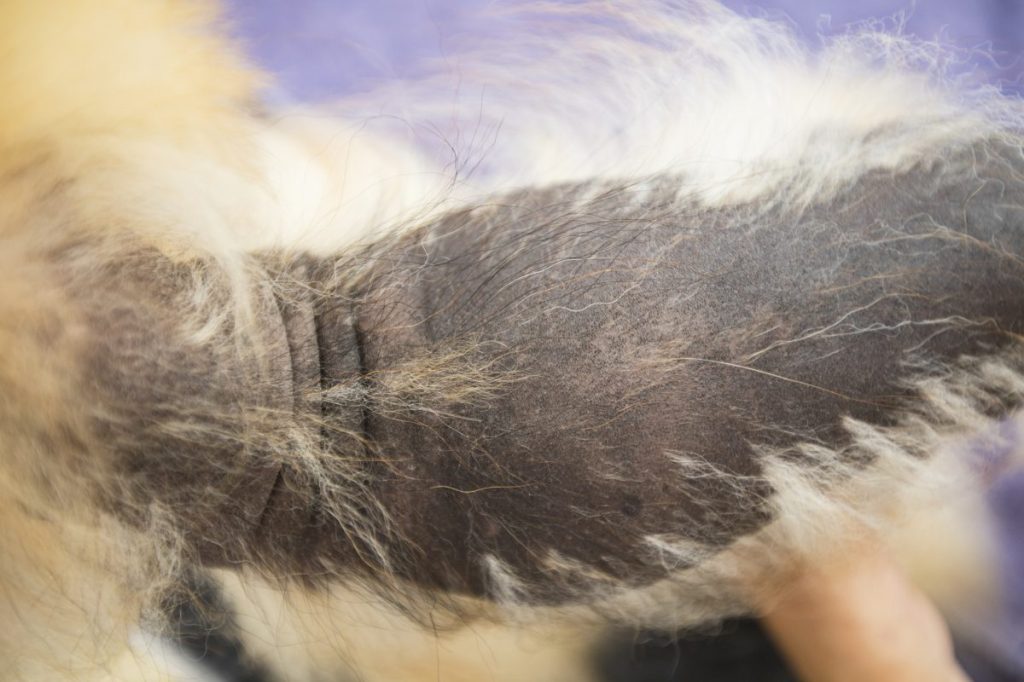Alopecia X in dogs, sometimes also called black skin disease, is a condition that causes the animal’s hair to gradually fall out, and patches of black skin develop in its place. If you see signs that your dog might be suffering from hair loss, then you must consult your veterinarian for a proper diagnosis and course of treatment. Here’s what you should know about the symptoms, causes, and treatments of alopecia X in dogs.
Symptoms of alopecia X in dogs
The symptoms of alopecia X in dogs start with hair loss. This can be gradual at first, with hair seeming to thin out before falling out completely. In place of the hair, black patches of skin begin to appear.
Causes of alopecia X in dogs
The cause of alopecia X in dogs is often some sort of hormonal imbalance. Some of the other suggestions for possible causes include:
- Allergies
- Genetic predisposition
- Canine obesity
The condition affects some dog breeds more than others. Some of the dog breeds that most commonly suffer from alopecia X include:
Treatments for alopecia X in dogs
If you notice that your dog’s hair is falling out and you suspect that they might be suffering from alopecia X, your veterinarian will want to carry out a full physical examination and also order blood tests. Due to the difficulty in identifying the root cause, diagnosis of the disease often begins with attempting to rule out other conditions first.
If your vet confirms their diagnosis, they might suggest treatments that attempt to stimulate hair growth. Sometimes they might order a combination of using a special topical shampoo containing glycolic acid alongside retinoid therapy.
In other cases, hormonal therapy can be an option; although, this can be a long process that requires lots of vet visits and close monitoring of a dog’s hormonal balance.
Additionally, vets often advise that dogs suffering from this condition wear sunscreen on the affected areas of their skin. Make sure to use a sunscreen recommended by your vet or one that is specially formulated for dogs.









